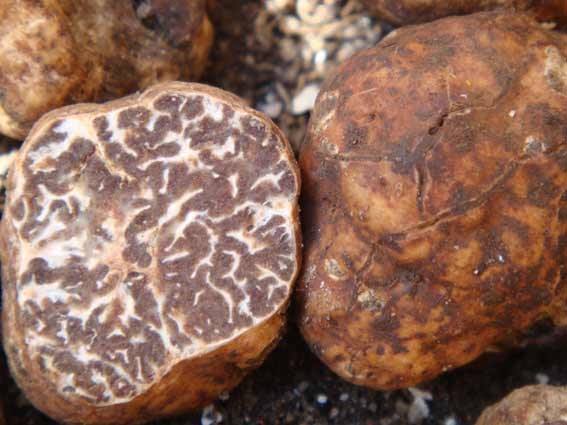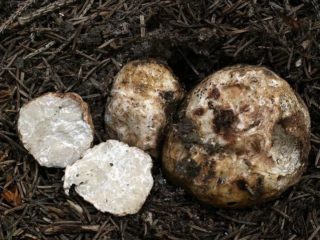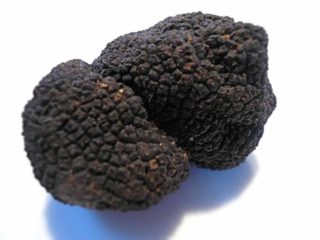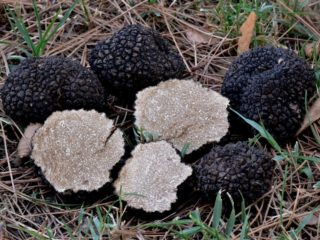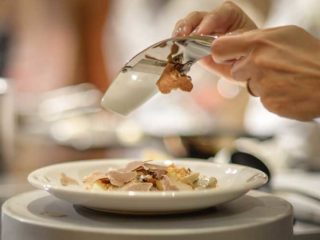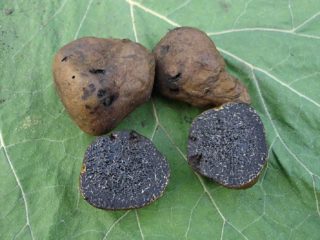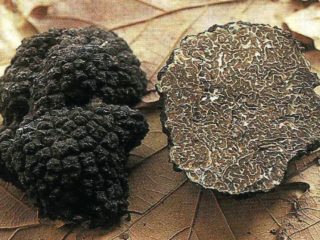Content
The Truffle family consists of numerous species that differ in appearance and nutritional value. The early representatives include the white March truffle, which fructifies in the first spring month. The fungus is listed in biological reference books under the Latin names TrufaBlanca demarzo, Tartufo-Bianchetto or Tuber albidum.
What a white March truffle looks like
The species forms fruit bodies under the topsoil. The fungus does not come to the surface. When the apothecia matures, it increases and raises the soil in the form of small tubercles. The mycelium produces several specimens arranged in a semicircle.
With careful collection, the mycelium grows and occupies a large territory, in one place it bears fruit for several years, increasing the yield. The white March truffle grows at a depth of 10 cm. The ripening period is long: it will take the species about 3.5 months to reach maturity.

Ripe March truffle with a non-uniform dark brown color
The external characteristics of the mushroom are as follows:
- The fruiting body of a white March truffle without a stem is covered with peridium - a leathery layer. Outwardly it looks like a rounded tuber with a bumpy surface. Mushrooms grow up to 7-10 cm.
- In young specimens, the color of the apothecia is light beige or white; by the time of maturation, the surface becomes dark brown, not monotonous with darkish areas and oblong grooves. The fungus becomes covered with mucus.
- The structure of the pulp is dense, juicy, dark on the cut with white marble streaks. With age, it becomes loose.
- The spore-bearing layer is located in the middle of the ascocarp, the ripe spores make the pulp powdery and dry. The taste of young specimens is delicate, poorly expressed.
Where does the white March truffle grow?
The species is widespread throughout southern Europe, in Russia it is collected in the Crimea, Krasnodar Territory. The main cluster of the March white truffle is in Italy. The first harvest is taken at the end of February, the peak of fruiting occurs in March and April. Depending on seasonal weather conditions, early spring and snowy winter, fruiting is stable and quite long.
The mycelium is located at a depth of 10-15 cm near conifers, parasitizing on the superficial root system. Less commonly, the species is found under deciduous trees. The composition of the soil is calcareous, aerated, moderately moist.
Is it possible to eat the white March truffle
The early March mushroom is edible and has a pleasant taste. In young specimens, a garlic smell is present, but not as pronounced as in overripe ones. This gastronomic feature does not add popularity to the March white truffle.
False doubles
Outwardly, a white Italian truffle looks like a white March truffle. The nutritional value of a similar species is higher.
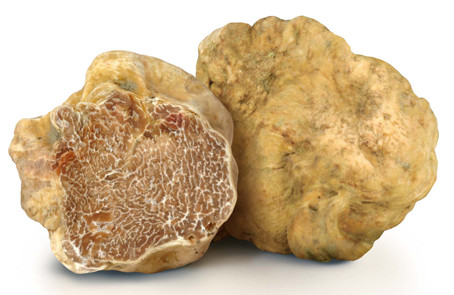
White Italian truffle beige or light brown
Grows in the northern part of Italy.Fruit bodies are collected in deciduous forests under hazel or birch trees, less often mycelium is located near aspens. Ascocarp is formed at a depth of 10 cm, it does not come to the surface. The species is quite large, some specimens weigh up to 450-500 g.
The shape is round, strongly bumpy. The surface is beige or light brown. The flesh on the cut is dark red with a brown tint and white thin streaks. The taste is delicate, the smell is cheesy with unobtrusive subtle garlic notes.
Inedible counterparts include deer or grain truffles.
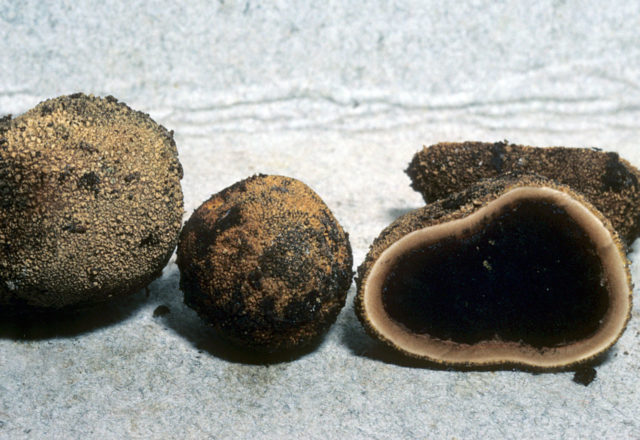
Reindeer truffle can cause gastrointestinal upset
At the same time, the mushroom is an irreplaceable chemical feed for deer, squirrels and other animals. It is dense, thick peridium with a warty surface. The bedding in the ground is shallow - up to 5-7 cm. The fruit body is shallow - 1-4 cm.
The mycelium is located in coniferous forests, settles under moss, in sandy soil, near pines and, less often, fir trees. Single mushroom places are found in Karelia and near St. Petersburg. At the beginning of growth, the color is bright yellow, then dark brown. The flesh is dark gray closer to black without radial white streaks.
Collection rules and use
Collect the March white species in perennial forests under trees with a well-developed root system. The mycelium is located in open dry areas among the grass. In the area of formation of such places, the vegetation will be weak, ascocarps actively absorb nutrients from the soil. Fruiting in the same areas for several years.
The species begins to form fruiting bodies in December, in March they ripen and form small tubercles on the surface. The main task is not to damage the mycelium when collecting. There may be about seven copies in one place. If one mushroom is found, there will definitely be others nearby, possibly of a smaller size, so they do not protrude above the ground.
The early March species does not give a large harvest; it is used very rarely for winter harvesting. Although it is quite suitable for such processing. Used as an addition to a side dish, prepare the first course. Squeeze oil from fruit bodies, add to recipes. Dried mushrooms are ground into powder to obtain a fragrant spice.
Conclusion
White March truffle is rare in Russia, the edible mushroom has a pleasant taste and a pronounced garlic smell. Forms mycorrhiza mainly with conifers. Early fruiting, forms small groups of 4-7 specimens, which are located under the topsoil.
